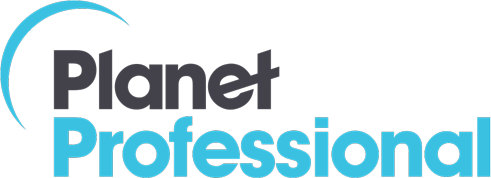HR in 2023: The Year of the Employee
It’s been a difficult few years for HR professionals and business leaders. That’s an understatement, of course. However, when we look closer at what has occurred in the workplace and the labor market, we can see an emerging trend – the personalization of the work environment, whether it’s speaking to employees’ values, hybrid work arrangements, or personalized training and career guidance.
Today’s workers – millennials and Gen Z especially – are accustomed to personalized experiences in the consumer space. They are used to companies speaking directly to them and targeting their marketing to their needs and wants. They have come to expect the same of employers.
HR is uniquely positioned to meet this expectation and deliver positive experiences to employees. Here are four trends we see shaping the workplace in 2023 and beyond.
Connect with Employees’ Values Outside the Workplace
In addition to the health crisis brought on by COVID-19, the last few years has seen much social and political upheaval. Consider concerns about racial equality, reproductive rights, and the war in Ukraine. Whereas in the past, the line between work and private life was firm, today we see a blurring. Employees want to see their employers acknowledge the impact of these external events on their lives. Particularly among Gen Z, employees are saying that if they don’t see an authentic approach to diversity, equity and inclusion (DEI) in an employer, they will seek work elsewhere. According to a 2022 study by the ADP Research Institute, over three quarters (76%) of workers say they would consider looking for a new job if they discovered there was an unfair gender pay gap or no DEI policy at their company. People want to stay with a company longer when they believe in what they’re doing and feel that they’re working with people who share their values.
CEOs are now looking to their HR teams for messaging and dedicated resources to meet these expectations of corporate social responsibility. This means HR will have more of an active and leading role at the executive table.
Personalized Career Guidance
When previous generations graduated college, they found a job and then stayed with that company until they retired. The idea was you climbed the ladder, working your way up to better positions with more income. Today many workers feel there is no ladder to achievement and growth, in fact they perceive a ceiling instead. Consequently, they feel the only way to develop their career and increase income is to switch companies.
HR is tasked to find unique ways to help candidates grow in their career and on a personal level so that they don’t feel stagnant in their jobs. This means focusing on the individual’s strengths, understanding what they want and need, keeping tabs on their engagement on a frequent basis and tailoring learning and development to their career aspirations. Instead of a ladder, it may mean a more horizontal approach. Organizations are focusing on upskilling and reskilling, mining internal talent instead of recruiting external candidates. HR and frontline managers must personalize the career growth experience to retain good workers before the employee gives their notice and it’s too late
HR and frontline managers must personalize the career growth experience to retain good workers. When the employee gives their notice, it’s too late.
The New Normal Working Environment
The expression “the new normal” has become a cliché. However, in truth, what’s considered normal is still in flux. Many employers are demanding workers return to the office full-time. They feel this is important to maintain the culture and benefit from “water cooler talk.” Many employees and candidates are flat out saying no. Because of the pandemic employees around the world have gotten a taste of remote working. They don’t want to miss their child’s dance recital or soccer game. They like having more control over their calendar and when and how work gets done.
The hybrid work environment really is the new normal. It’s the best of both worlds. With a few days in the office, people get to interact and network, learn from others and strengthen the culture. But those two or three days at home gives the employee a feeling of flexibility, a way to personalize and blend work and home. The challenge for HR and frontline managers is to find new ways to develop employees and have their needs met in this working environment. The focus should not be on how much time you spend in the office but on whether goals are met, and productivity is high.
Virtual Reality Comes to the Workplace
If you think VR headsets are just for gaming, think again. Virtual reality is being used to enhance a host of workplace interactions. Bill Gates predicts that within the next two or three years, most virtual meetings will move from 2D camera image grids to the metaverse, a 3D space with digital avatars. The metaverse is a persistent virtual space residing on the internet that exists whether anyone is present at any given moment. The opportunities for more immersive and realistic interactions are many. HR could create a virtual space where candidates could come and experience the company’s culture, for instance. It could be used for career fairs, onboarding and work simulations during the hiring process. Training and development could occur in a more personalized and asynchronous environment, or in a collaborative virtual space with other employees around the country or globe. There is an immediacy and physicality to VR that enhances the person’s experience. While it’s big companies like Meta, Microsoft and Samsung that are investing heavily in VR, this technology will be adopted by small and medium size companies too. HR should start identifying key use cases for their organizations and employees now.
All these trends have a common thread – the focus on the individual employee. In a tight labor market where workers are questioning every aspect of their employment journey, companies must focus on the person and their needs if they are going to attract and retain talent.
Photo Credit: Canva



